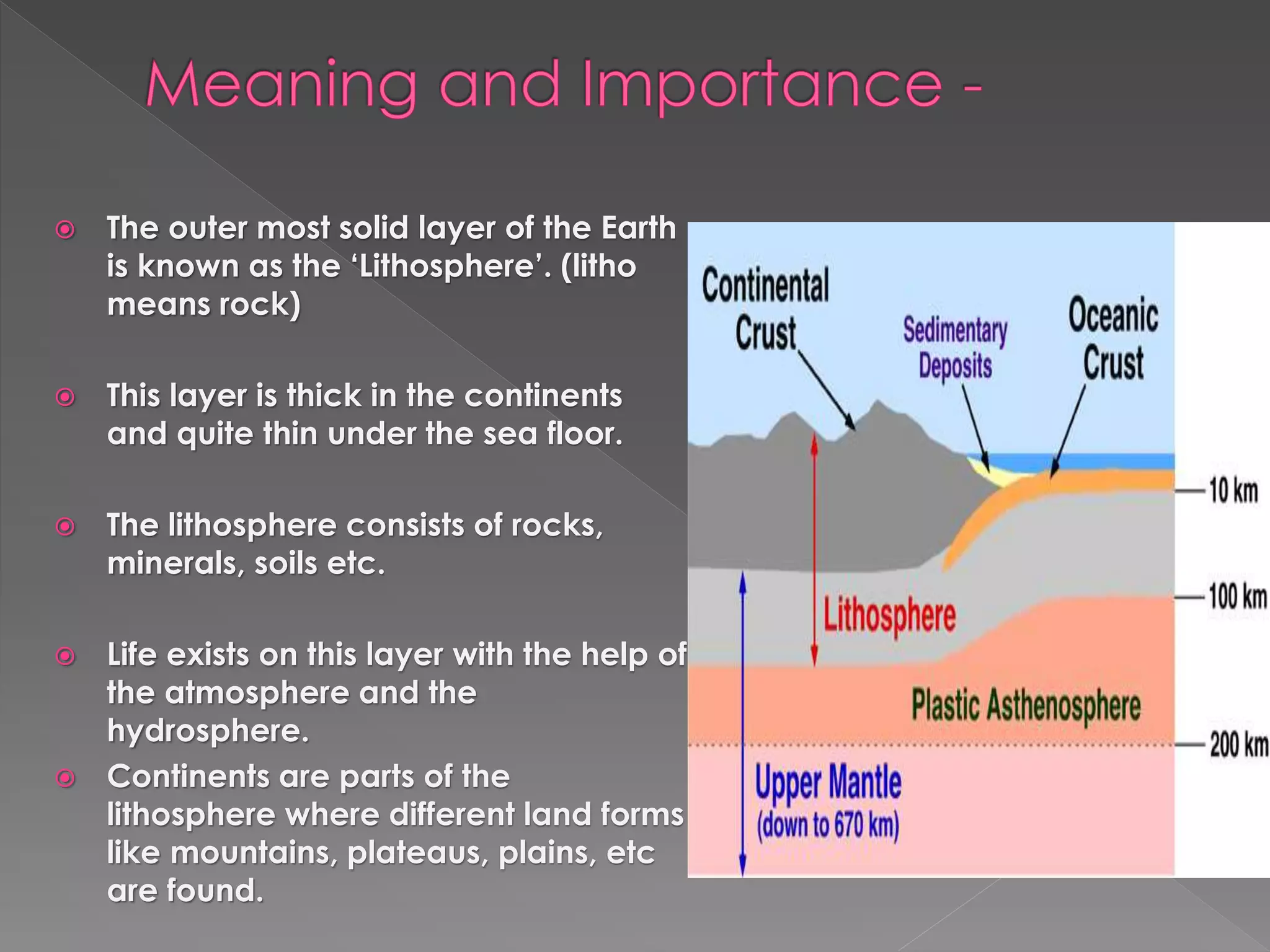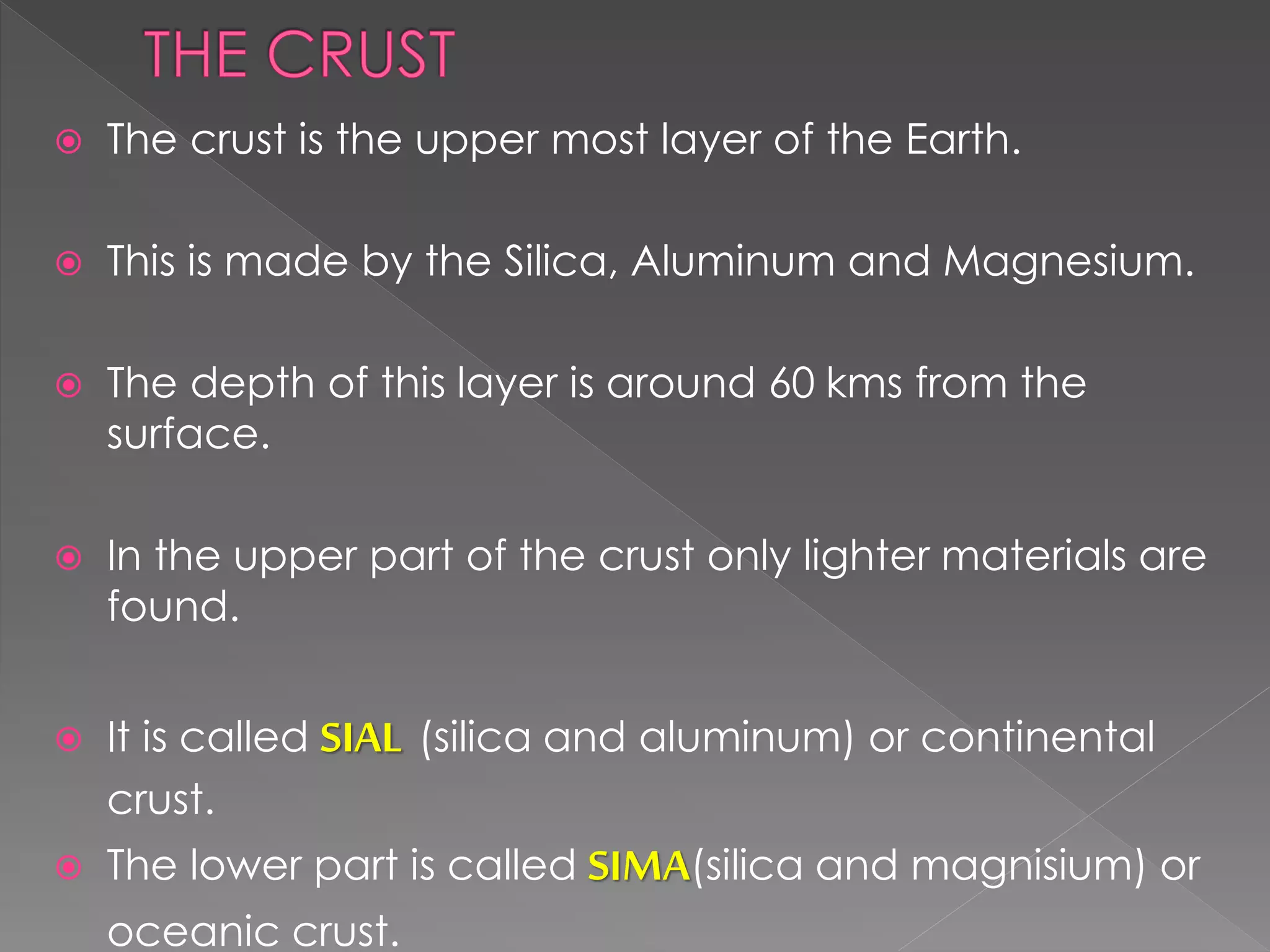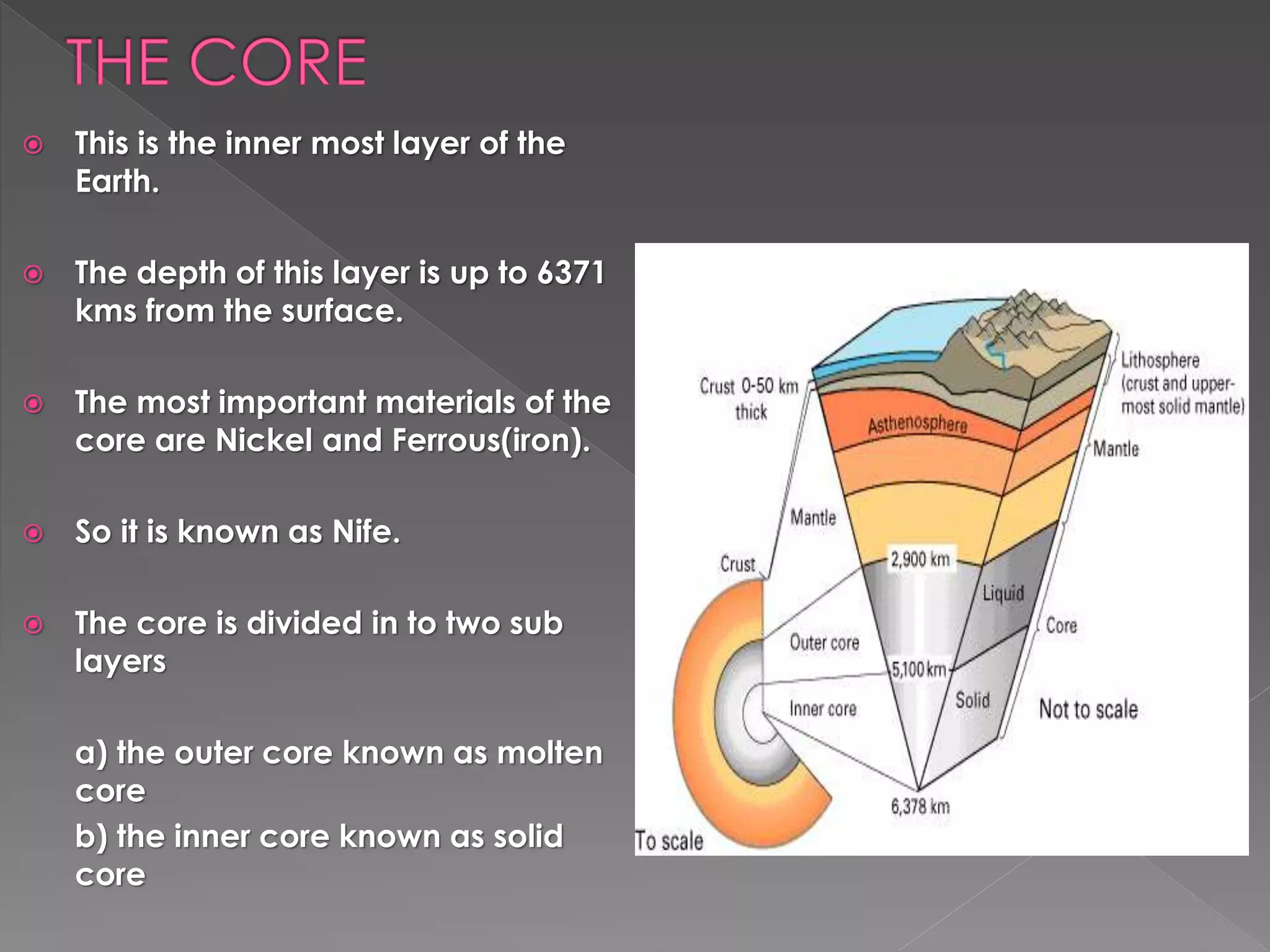The document discusses the structure and composition of the Earth. It is divided into three main layers:
1. The crust is the outermost solid layer and varies in thickness between continental and oceanic crust.
2. Below the crust lies the mantle, which makes up over 80% of the Earth's volume and is semi-solid.
3. The innermost layer is the core, divided into a solid inner core and liquid outer core composed of iron and nickel. Seismic waves and volcanic materials provide evidence about the Earth's inaccessible interior.




























































